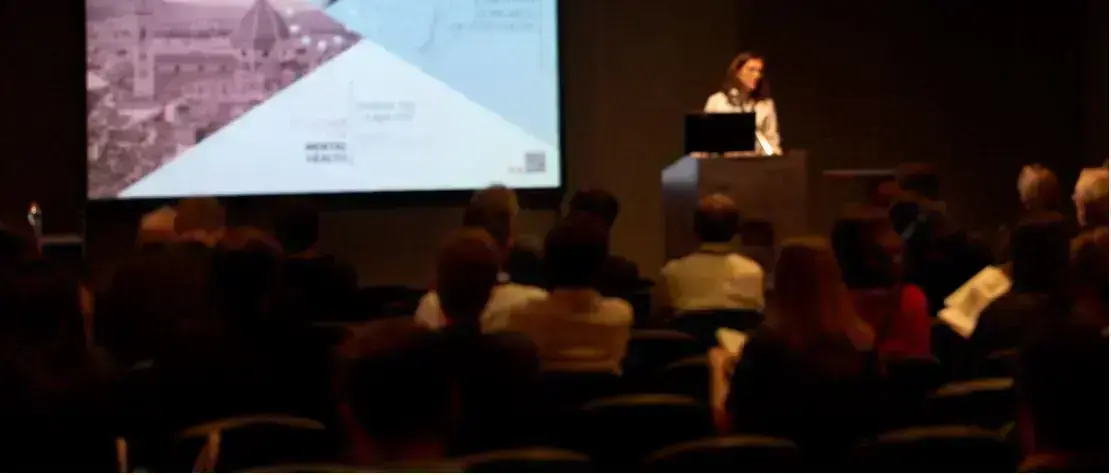A prospective cohort study is under way in high-risk subjects, with the aim of validating potential biomarkers of Alzheimer’s Disease in its pre-dementia phase. And the European Prevention of Alzheimer’s Dementia project is already recruiting a pool of subjects for proof of concept trials of promising interventions.
치매 발병 이전 단계에서 알츠하이머병의 잠재적인 바이오마커를 검증하기 위해 고위험군 피험자를 대상으로 하는 전향적 코호트(prospective cohort) 연구가 진행되고 있습니다. 또한 유럽의 알츠하이머병 예방 프로젝트 또한 유망한 중재법들(interventions)의 개념 증명(proof of concept) 시험을 위한 피험자들을 모집하고 있습니다.
Epidemiological studies are now showing consistent falls in the age-standardized incidence of Alzheimer’s Disease – attributed to better control of cardiovascular risk factors in middle age, and perhaps also to rising levels of education. So the rising tide of dementia is not inevitable. But, with the rapidly aging world population, demography is pulling powerfully in the opposite direction.
역학 연구에서는 중년기 심혈관 위험 요인들의 효과적인 관리와 교육 수준의 향상 덕분에, 연령 표준화된(age-standardized) 알츠하이머병 발병률이 꾸준한 감소를 보인다는 결과를 보여주었습니다. 따라서 치매 발생률의 상승세는 피할 수 있지만, 급속히 증가하는 노인 인구와 함께 실제 치매환자 수(demography)는 반대방향(발병률의 감소에 역행하여 다시 증가 방향)으로 끌어올려지고 있습니다.
As of 2019, 36 million people worldwide have dementia. On current trends, there will be 115 million by 2050; and two-thirds will be in low or middle-income countries. So this is a truly global problem; and there is no denying the need for prevention.
2019년 기준, 전세계 3600만 명의 사람들이 치매를 앓고 있으며, 이 추세대로라면 2050년에는 환자 수가 1억 1500만 명이 됩니다. 이들 중 3분의 2는 저소득 또는 중간 소득 국가입니다. 이 문제는 명백히 전세계적인 문제이며, 예방의 필요성에 있어서는 이견이 있을 수 없습니다.
Given the time lag between the first evidence of tau accumulating in the brain and the onset of even mild cognitive impairment, there is ample time to intervene. But how would we set about doing it?
뇌에 타우(tau) 축적이 처음 확인되고 경도인지 장애가 나타나기까지의 시간을 고려할 때 중재에 충분한 시간이 있습니다. 하지만 그것을 어떻게 수행할 수 있을까요?
Hypertension and obesity in mid-life are among the factors we can control
중년기 고혈압과 비만은 통제 가능한 위험요인들입니다
Let’s address the risk factors we can control
우리가 통제할 수 있는 위험요인들에 대해 다루어 봅시다
There is nothing we can change about ApoE4 as a risk factor. However, data from studies in southern France suggest that eliminating diabetes and depression and widespread adoption of a Mediterranean diet could – in theory -- decrease the incidence of dementia by twenty percent. In currently less healthy northern France, the reduction might be 35%.
위험요인으로서 ApoE4에 대해서는 우리가 바꿀 수 있는게 없습니다. 하지만 프랑스 남부지방에서 실시된 연구 결과에서는 당뇨병과 우울증을 치료하고 지중해식 식사를 광범위하게 도입함으로써 이론적으로 치매 발병률을 20% 줄일 수 있다고 제안하였습니다. 현재 상대적으로 덜 건강한 프랑스 북부의 경우 감소율은 35%까지 될 수 있습니다.
But we need to demonstrate by prospective study that intervention works. We cannot wait for a reduction in dementia as the outcome measure. Hence the need to look at biomarkers for the signal that will give us the confidence to proceed, and to convince health authorities to provide the massive funding needed for nationwide dementia prevention strategies.
하지만 전향적 연구를 통해 중재 효과를 입증해야 합니다. 우리는 결과 척도로서 확인되는 치매의 감소를 기다리고 있는 수만은 없습니다. 따라서 연구 진행에 자신감을 줄 수 있는 신호로서 바이오마커를 살펴보고, 보건당국이 전국적인 치매 예방 전략에 요구되는 막대한 비용을 제공하도록 납득시킬 수 있어야 합니다.
According to Karen Ritchie (University of Montpellier, France), the window of opportunity for prevention lies between the ages of 40 and 59. And observational data suggest that the biomarkers to look at include loss of hippocampal volume and early signs of cognitive decline.
카렌 릿치(Karen Ritchie, 프랑스 몽펠리에 대학교)에 따르면 예방 기회가 있는 연령 범위는 40~59세입니다. 관찰 데이터에 따르면 주시해야 하는 바이오마커에는 해마 체적의 감소와 인지 능력 저하에 대한 조기 징후들이 포함됩니다.
The window of opportunity for prevention lies between the ages of 40 and 59
예방 기회가 있는 연령 범위는 40~59세입니다
To gather confirmatory evidence on these and other candidate markers – including amyloid beta and tau in CSF and signs of neuroinflammation -- she and colleagues have designed the prospective PREVENT study.
그녀와 연구팀은 이들과 함께 CSF의 아밀로이드 베타와 타우, 신경 염증 징후 등 다른 마커에 대한 증거 수집을 위해 전향적 연구인 PREVENT study 를 디자인하였습니다.
The study also includes structural and functional MRI (both resting and task-related), and markers of dysregulation of the HPA axis – because of its association with stress. Biomarkers in mid-life will be related to outcome in risk groups defined by ApoE4 and family history.
여기에는 구조적 MRI와 기능적 MRI(휴식 및 과제 관련), 그리고 스트레스와 관련이 있는 HPA축의 조절 장애에 대한 마커가 포함됩니다. 중년의 바이오 마커는 ApoE4와 가족력에 의해 정의되는 위험 집단(risk group)의 결과와 연관됩니다.
Validating biomarkers
바이오마커의 검증
Based on its high rates of metabolic syndrome and AD, west London was chosen as the first area in which to recruit subjects. To date, the study has enrolled 210 people, half with at least one parent having a diagnosis of AD. Recruitment is now being extended to three other UK centres, and the target is one thousand subjects.
대사 증후군과 알츠하이머병의 높은 비율을 근거로 런던의 서부지역이 피험자 모집을 위한 첫번째 지역으로 선정되었습니다. 현재까지 210명의 환자가 등록되었으며, 이중 절반 이상은 부모 중 한 명 이상이 알츠하이머병 진단을 받았습니다. 현재 피험자 모집은 영국 3개 센터들로 확장되고 있으며, 목표 피험자 수는 1,000명입니다.
Tom Russ, of the Centre for Dementia Prevention at the University of Edinburgh, Scotland, is also busy recruiting subjects. The European Prevention of Alzheimer’s Disease (EPAD) project is aiming for a register of twentyfour thousand people. Six thousand of them will form a longitudinal cohort to act as a source of subjects – initially for proof of concept studies of preventive interventions, both lifestyle and pharmacological, and then – hopefully for phase III trials.
스코틀랜드 에딘버러 대학교 치매 예방 센터의 톰 러스(Tom Russ)도 피험자를 모집하고 있습니다. 유럽 알츠하이머병 예방(EPAD) 프로젝트는 2만 4천 명의 피험자 등록을 목표로 하고 있습니다. 이들 중 6천명은 종단적 코호트(longitudinal cohort)를 구성할 것이며 - 이들은 초기에는 라이프스타일 및 약물학적 중재를 모두 포함하는 예방적 중재의 개념 증명 (proof of concept) 연구에 참여하고 – 희망적으로는 이후에 임상3상 연구에 참여할 것입니다.
To date prevention trials have recruited slowly; and this resource is designed to speed the process.
현재까지 예방 시험을 위한 피험자 모집은 느리게 진행되어 왔으며, 진행속도를 높이기 위한 리소스가 디자인되었습니다.
The initial phase of EPAD will again look at potential biomarkers, with promising candidates moving into trials with a cognition outcome. Centers in Toulouse, Barcelona and Amsterdam have now joined the recruitment drive.
EPAD의 초기 단계에서는 바이오마커 후보들을 다시 살펴보고, 유망한 후보는 인지기능 지표를 동반하는 시험(trial)으로 이행될 예정입니다. 툴루즈와 바르셀로나, 암스테르담에 있는 센터들도 현재 피험자 모집 촉진에 동참하고 있습니다.
There is no shortage of enthusiasm, nor of good ideas. But will there be the money?
열정과 좋은 아이디에는 부족함이 없습니다. 그런데 자금이 있을까요?
“Towards a dementia free world” is a slogan that attracts attention. But moving quickly towards the Promised Land will not be easy. Does anyone now remember the WHO’s aim of “Health for all by the year 2000”? Will lack of resources also be the stumbling block on the road to a brighter cognitive future?
"치매가 없는 세상을 향해"는 주목을 끄는 슬로건입니다. 그러나 약속의 땅으로 빠르게 옮겨가는 것이 쉽지만은 않습니다. WHO의 목표였던 "2000년까지 모두가 건강한 세상 만들기" 를 지금 기억하고 있는 사람이 있을까요? 인지기능에 있어서 밝은 미래를 향해가는데 있어 부족한 재원이 걸림돌이 될까요?
본 자료는 Global Lundbeck 의학부에서 선별한 콘텐츠이며, 한국룬드벡의 의견과 다를 수 있습니다




